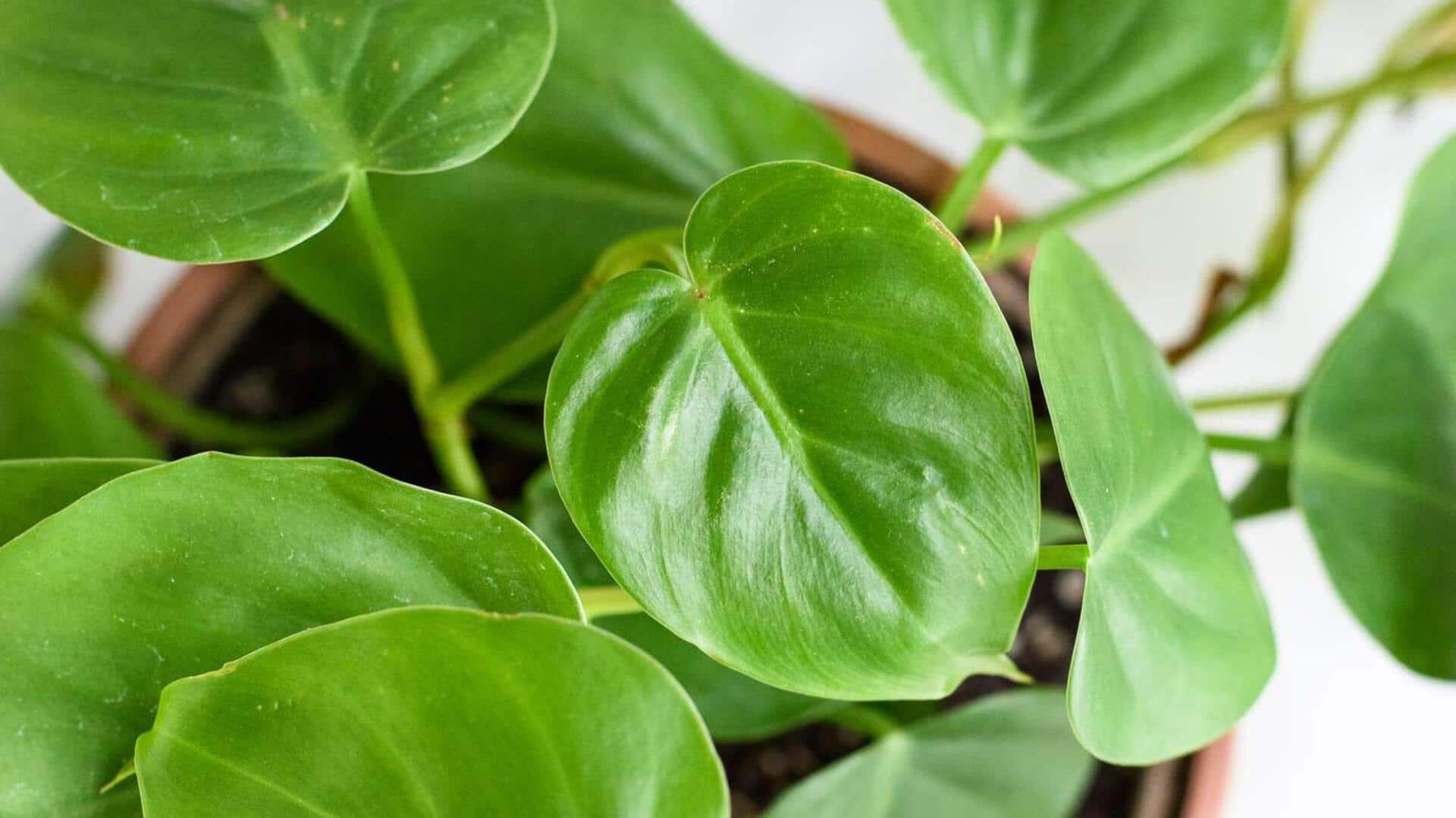
Brightening indoor spaces: 5 Philodendron care essentials
What's the story
Philodendrons are beloved houseplants, prized for their lush green foliage and resilience in the face of indoor conditions. These vibrant beauties have the power to transform any room into a tropical oasis, earning them a well-deserved spot in the hearts of plant lovers everywhere. Mastering the basics of philodendron care is crucial for unlocking their full potential and fostering a thriving indoor jungle.
Light
Optimal lighting conditions for growth
Philodendrons love bright, indirect sunlight. Direct sun can burn their leaves, and not enough light results in leggy growth. A north or east-facing window provides perfect light. If you don't have enough natural light, use grow lights. Position them about 12 inches above the plant and keep them on for 10-12 hours a day.
Water
The right watering routine
Watering philodendrons is crucial, but avoid over-watering as it leads to root rot. Only water when the top inch of soil feels dry, typically once a week. However, this depends on the humidity and temperature of your home. Water thoroughly until it drains out from the bottom of the pot. Always empty any excess water from saucers to prevent waterlogged conditions.
Environment
Importance of humidity and temperature
Philodendrons love a warm and humid environment that mimics their native tropical habitat. They do best in temperatures between 65 degrees Fahrenheit and 80 degrees Fahrenheit (18 degrees Celsius and 27 degrees Celsius). Keep your philodendron away from cold drafts or heating vents, as these can stress the plant. To boost humidity around your philodendron, use a humidifier or place a water-filled pebble tray under its pot.
Nutrition
Fertilizing for healthy growth
Feeding your philodendron encourages robust growth and vibrant leaf production. Apply a balanced liquid houseplant fertilizer diluted to half strength every four weeks during the active growth period of spring and summer. During the fall and winter months, reduce feeding frequency as growth slows down. Fertilize every six to eight weeks during this time.
Repotting
Repotting tips for philodendrons
Over time, as philodendrons grow, they can become root-bound or simply outgrow their pots, which isn't good for their health and growth. Experts suggest repotting them every two years in spring. Use a fresh potting mix to ensure healthy growth. While repotting, select a pot that's one size bigger than the existing one. Make sure it has sufficient drainage holes at the bottom to avoid waterlogging problems.